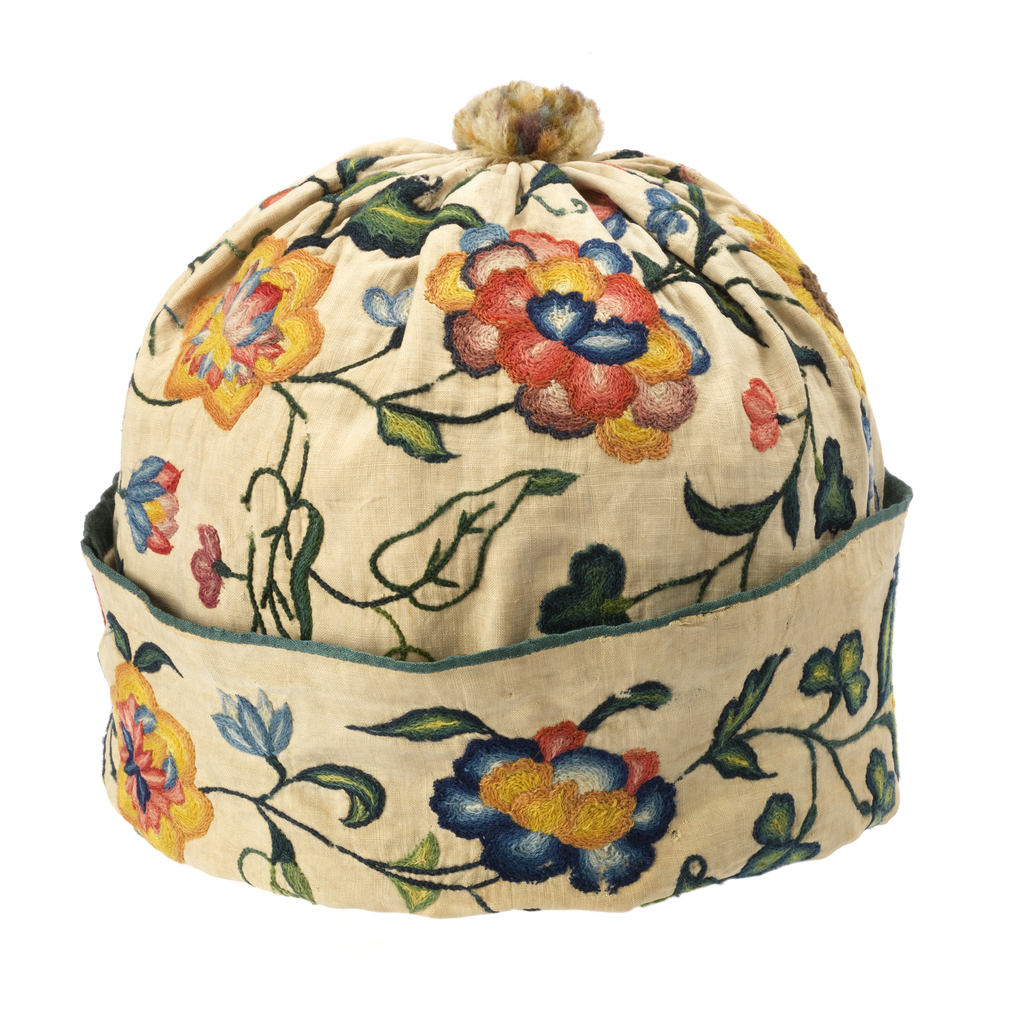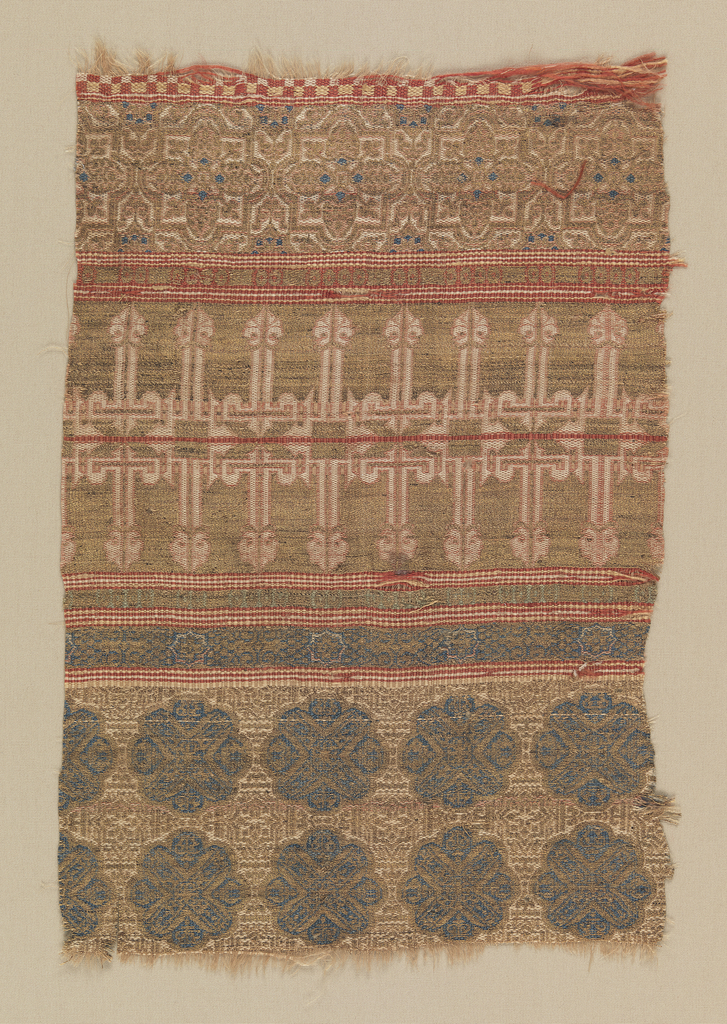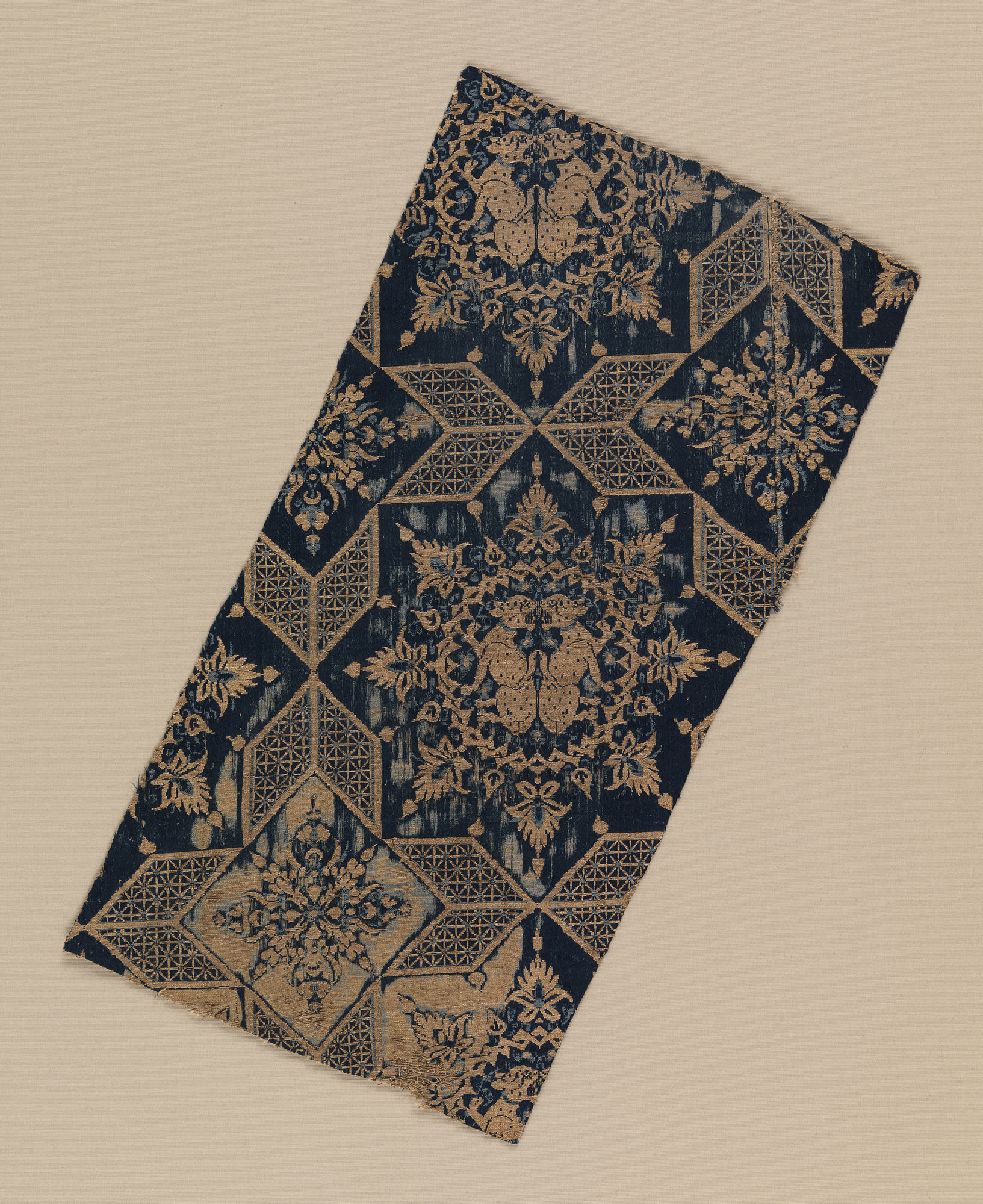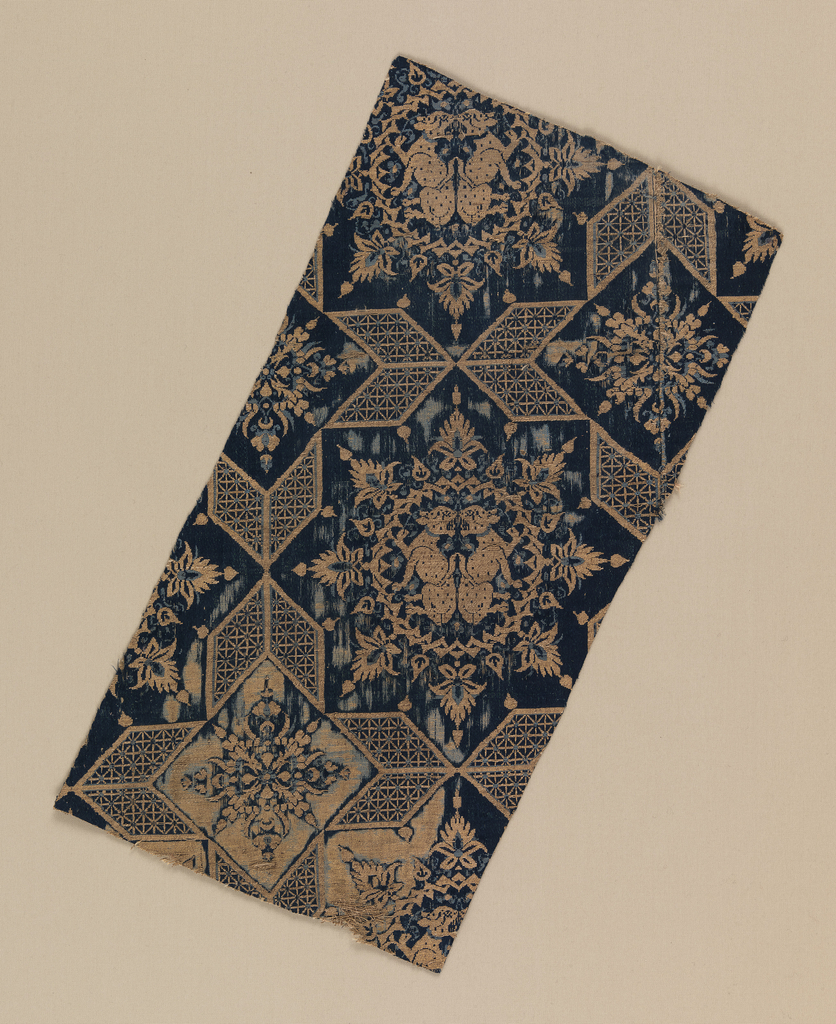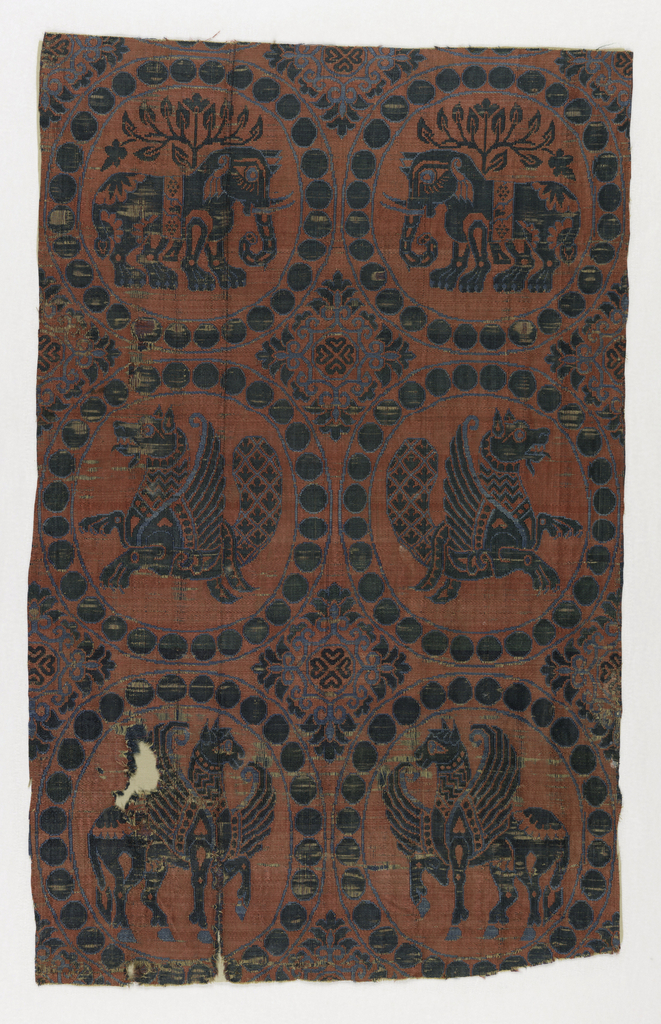This red-ground textile is decorated with zigzag rows of calligraphic inscriptions including Qur’anic verses, the shahada or Muslim profession of faith, and, in the central wide band, repeated cartouches with the names of the Prophet Muhammad and Allah. Large silks like this were commissioned every year by the Ottoman Sultan, who sent them to the...
This nightcap, dating from the late 17th or early 18th century, was made using a technique called crewel, a type of embroidery worked with wool yarn on linen. Since men had shaved heads or very short hair to accommodate their wigs during this period, they wore caps like this one to keep warm after their...
This Spanish textile is a fragment of a mantle discovered in the tomb of the Infante Don Felipe of Castile (1231-1274) at the church of Santa María la Blanca in Villalcázar de Sirga, Palencia. Felipe famously led a noble rebellion against his brother Alfonso X, king of Castile, and eventually decided to seek asylum in...
This Spanish textile features confronted leopards or cheetahs within a geometric framework, an enduring motif that probably originated in early Islamic Egypt or Persia. Woven in the 15th century by Islamic weavers, this silk lampas may have been produced in Almería, a center of silk production in Andalucía and a source of blue and gold...
This Spanish textile features confronted leopards or cheetahs within a geometric framework, an enduring motif that probably originated in early Islamic Egypt or Persia. Woven in the 15th century by Islamic weavers, this silk lampas may have been produced in Almería, a center of silk production in Andalucía and a source of blue and gold...
This Spanish silk, decorated with exotic and imaginary animals in pearled roundels, was most likely woven by Islamic craftspeople in 11th or 12th-century Spain. The roundels are bilaterally symmetrical and depict, from the top down, elephants, senmurvs (composite creatures with dog heads, lion paws, peacock tails, and wings), and winged horses. Patterns, like the zigzag...

